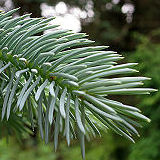
Needles: Sharp, thin, blue, stick out all around twig
Cones: 3" long with paper-thin scales
Bark: Gray-brown scales
Many of the conifers found in our cities and parks are non-natives, introduced from other parts of the country or from around the world. Look for them in local parks. You may see some in your neighborhood. You may even find one in your own yard.

|
Needles: Sharp, thin, blue, stick out all around twig Cones: 3" long with paper-thin scales Bark: Gray-brown scales |
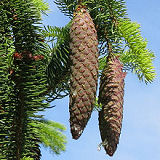 |
Needles: Sharp, thin, stick out all around the twig Cones: 4-7" long with paper-thin scales Bark: Gray-brown scales |
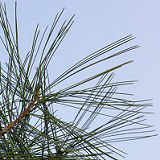
|
Needles: 3-5" long in bundles of 5 Cones: 4-6" long, curved Bark: Dark gray scaly plates |
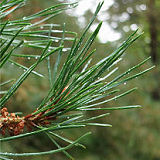 |
Needles: 1-3" long in bundles of 2, often blue-green Cones: 1-2" long, egg-shaped, diamond-shaped scales Bark: Young bark is orange-red, developing gray scales on large trunks |
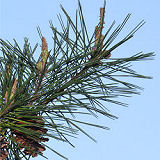
|
Needles: 3-4" long in bundles of 2 Cones: 2" long, egg-shaped Bark: Red-brown, developing flaky scales on large trunks |
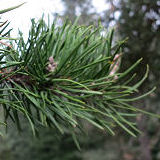 |
Needles: 1-2" long in bundles of 2 Cones: 2" long, curved, clusters of 2 or 3, point forward on branch Bark: Young bark is orange-red, developing gray scales on large trunks |
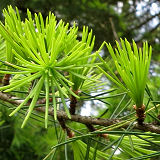 |
Needles: Bundles of 15-35, sharp points Cones: Upright, disperse seeds on tree Bark: Gray, furrowed with flat plates |
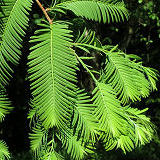 |
Needles: Flat and flat on twig Cones: Small, egg shaped, hard, like Redwood cones. Bark: Reddish-brown, becoming furrowed |
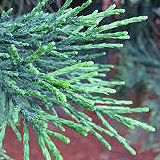 |
Leaves: Awl-shaped with sharp points Cones: Size and shape of a chicken egg, hard, lip-shaped scales Bark: Reddish brown, soft with deep furrows |
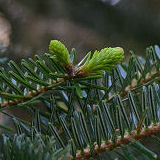 |
Needles: 1" long, stiff, growing all around twig Cones: 4-7" long, upright Bark: Gray with blisters, breaking into scaly plates and small fissures |